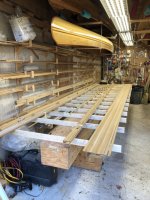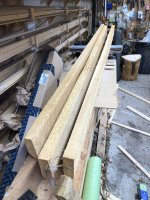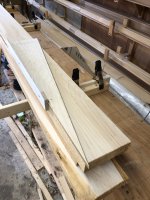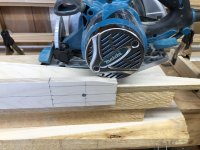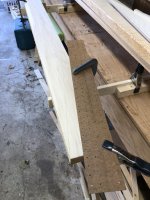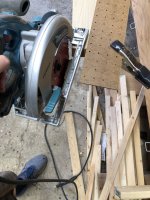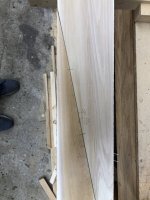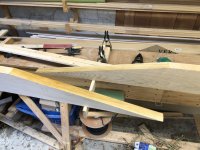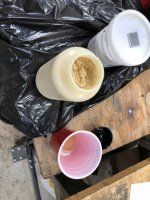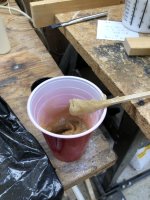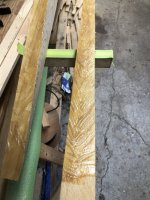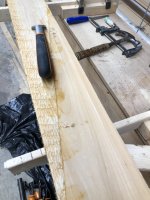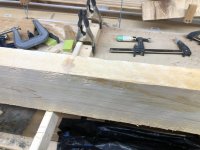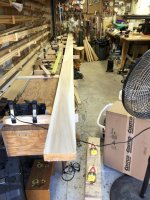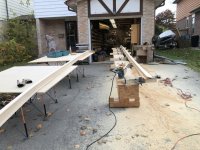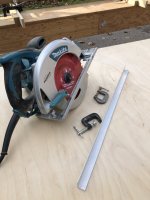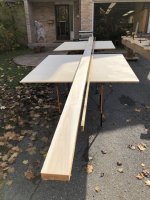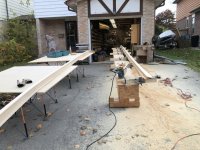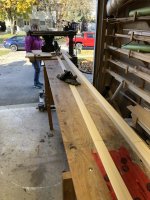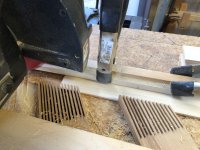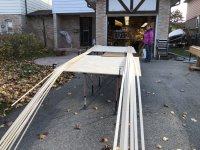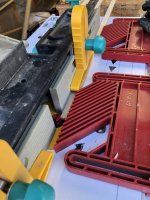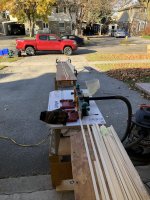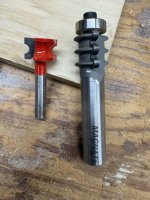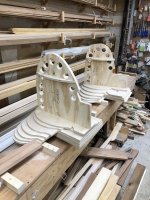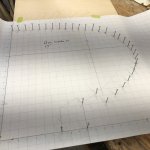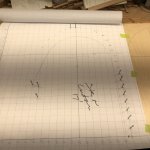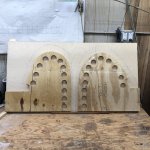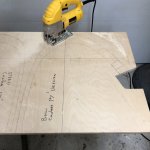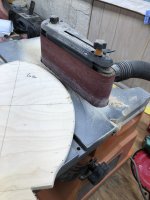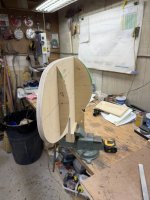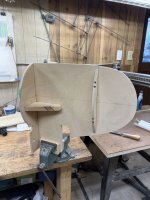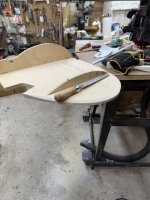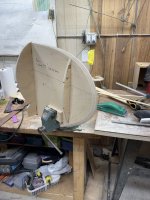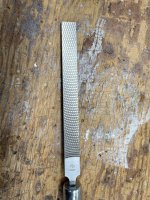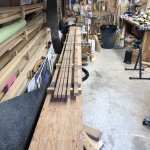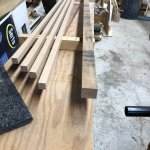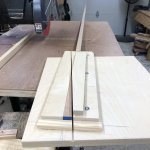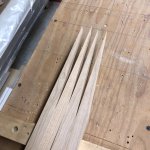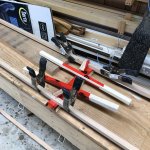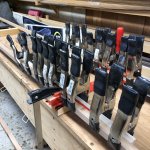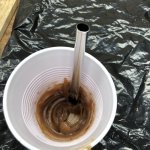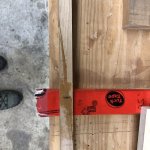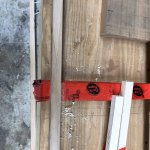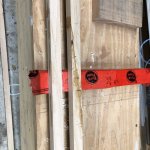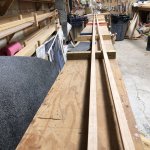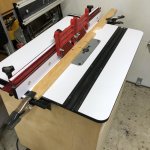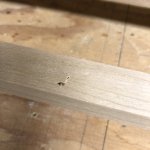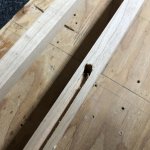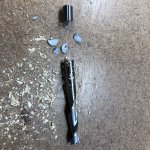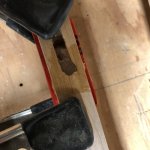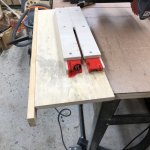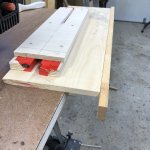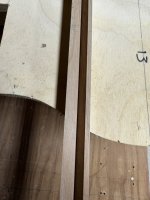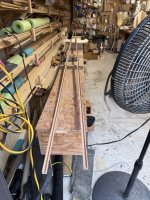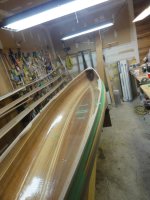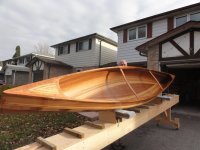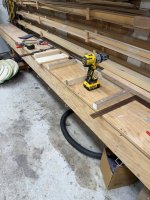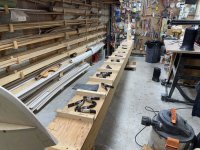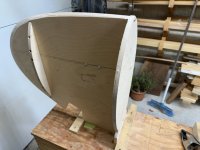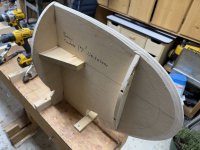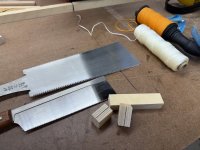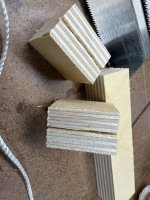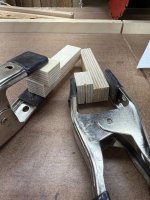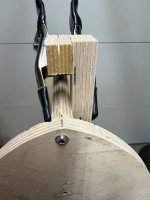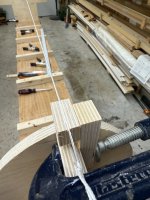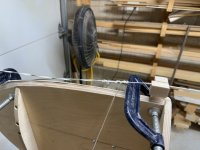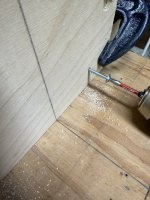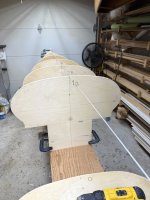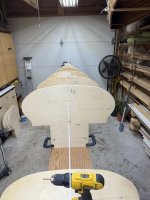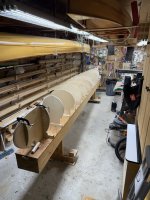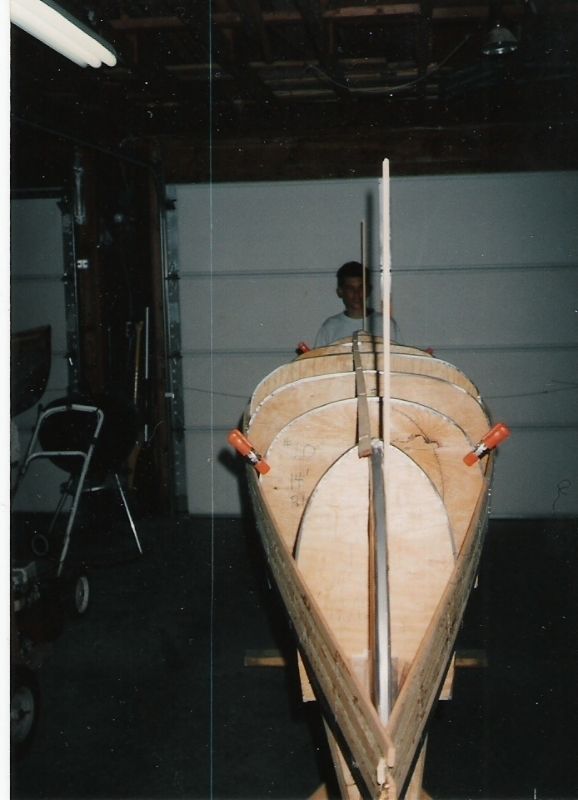Solo on the Light Side
Over the past couple of months, I noticed something about the canoe lookingfor/purchase/release threads that I never noticed before. There is a repeating theme of wanting to tweak and change some things, wishing for others in various boats, as they get discussed.
It dawned on me that this is why builders collect so many boats ... when they get an idea or want to try that or see something that's cool, the internal response is ... I could build that ... that is the how and why the DIY rabbit hole gets so deep so fast.
In 2019 I took the lines from a 14' KeeWaydin and stretched it to 15', modified the bow/stern a little and made a fairly light solo canoe. The canoe very closely fits my needs, except when I get near the shoulder seasons, then the warmer gear makes the bags a little larger and the canoe just a little crowded. Although I am pretty sure I am mid range in the load capacity, I would like to be closer to the lower end so the boat has a little less draft.
Discussing the idea of extending the length to 17' with some of my camping friends, it was pretty much figured that moving from 15' to 16' would be optimum, the little voice in my head wasn't really convinced, so 17' will be the new build. To keep it interesting, the challenge, for me, is to build the new canoe at or less than the weight of the 15' version.
The original is about 31 pounds at 15' or ~2 pounds per foot, which means I need to figure a way to be 4 pounds better than last time, with out compromising the overall strength. Over the past 18 months I have been reprocessing strips, acquiring materials and researching alternative ways (for me) of building and figuring out how to achieve that 4 pound reduction goal.
The basic planned changes (there will be tweaks along the way) and the expected impact for this build are:
- swap from 6 oz E Glass to 4 oz S Glass, ~ 1.5 pounds
- using an epoxy pre seal coat, ~ .75 pounds
- lighter version of foot braces, ~ .5 pounds
- balsa/fiberglass thwarts, ~ .5 pounds
- stemless construction, ~ 5 oz
The build is about 2 months along and as with the last build thread, I will be breaking this one down into sections, less attention to repeated items from last build (things I didn't change) and more on things that are new to me. The glassing has the biggest changes and rationale will be covered when I get to that section.
Should be a fun ride.
Brian
Last build link for those interested:
Over the past couple of months, I noticed something about the canoe lookingfor/purchase/release threads that I never noticed before. There is a repeating theme of wanting to tweak and change some things, wishing for others in various boats, as they get discussed.
It dawned on me that this is why builders collect so many boats ... when they get an idea or want to try that or see something that's cool, the internal response is ... I could build that ... that is the how and why the DIY rabbit hole gets so deep so fast.
In 2019 I took the lines from a 14' KeeWaydin and stretched it to 15', modified the bow/stern a little and made a fairly light solo canoe. The canoe very closely fits my needs, except when I get near the shoulder seasons, then the warmer gear makes the bags a little larger and the canoe just a little crowded. Although I am pretty sure I am mid range in the load capacity, I would like to be closer to the lower end so the boat has a little less draft.
Discussing the idea of extending the length to 17' with some of my camping friends, it was pretty much figured that moving from 15' to 16' would be optimum, the little voice in my head wasn't really convinced, so 17' will be the new build. To keep it interesting, the challenge, for me, is to build the new canoe at or less than the weight of the 15' version.
The original is about 31 pounds at 15' or ~2 pounds per foot, which means I need to figure a way to be 4 pounds better than last time, with out compromising the overall strength. Over the past 18 months I have been reprocessing strips, acquiring materials and researching alternative ways (for me) of building and figuring out how to achieve that 4 pound reduction goal.
The basic planned changes (there will be tweaks along the way) and the expected impact for this build are:
- swap from 6 oz E Glass to 4 oz S Glass, ~ 1.5 pounds
- using an epoxy pre seal coat, ~ .75 pounds
- lighter version of foot braces, ~ .5 pounds
- balsa/fiberglass thwarts, ~ .5 pounds
- stemless construction, ~ 5 oz
The build is about 2 months along and as with the last build thread, I will be breaking this one down into sections, less attention to repeated items from last build (things I didn't change) and more on things that are new to me. The glassing has the biggest changes and rationale will be covered when I get to that section.
Should be a fun ride.
Brian
Last build link for those interested:
Light Weight Solo Tripper Build
This will be a somewhat ambitious build ( at least for me), the design will be a 15' solo cedar strip with a max weight of 30 pounds and still be tripping tough. I also want to take a hand in the design portion and I don't intend to resort to one of the standard CAD programs as they are just a...
www.canoetripping.net

